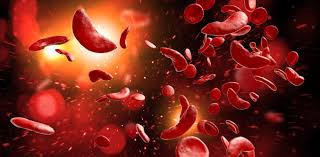
Sickle cell anemia is a genetic blood disorder that affects red blood cells. It’s most commonly found in people of African descent, but it also affects people of Hispanic, Middle Eastern, and Mediterranean ancestry.
Sickle cell anemia is a disease that is mainly found in sub-Saharan Africa. It is estimated that over 300,000 babies are born with this disease each year. The cause of this disease is a mutation in the HBB gene, which results in the production of abnormal hemoglobin called hemoglobin S. This modified hemoglobin causes red blood cells to stiffen and take on a sickle shape, which leads to a variety of health problems.
Sickle cell anemia has significant and complex health impacts in Africa. People living with the condition often experience chronic pain, fatigue, anemia, and increased susceptibility to infections. Sickle cell crises, which are characterized by severe pain and organ damage, are common and can be life-threatening. Additionally, the disease can damage various organs, including the spleen, liver, lungs, and kidneys, leading to long-term complications and reduced life expectancy.
Sickle cell anemia is a major health challenge for Africa, but there are several factors that make it difficult to address effectively. One of the primary obstacles is limited access to healthcare services, which includes diagnostic testing, specialized care, and affordable treatments. This lack of access can make it difficult for people with sickle cell anemia to get the care they need to manage their condition. Additionally, there is a widespread lack of awareness and understanding of the disease, which can lead to stigmatization, discrimination, and misunderstandings within communities. Finally, managing sickle cell anemia can be a significant financial burden, with medical expenses and lost productivity causing significant strain for affected individuals and their families.
Although sickle cell anemia remains a challenge in Africa, there have been significant efforts to address the issue. Some countries have implemented newborn screening programs to identify infants with the disease early, enabling early intervention and management. Genetic counseling services are also available to assist families in understanding their risk of having children with sickle cell anemia and making informed decisions. In addition, there is ongoing research into new treatments and therapies for sickle cell anemia, including gene therapy and stem cell transplantation. These advancements hold promise for improving outcomes and quality of life for individuals living with the disease.
Education, awareness, and advocacy are critical in addressing sickle cell anemia in Africa. It is essential to raise awareness about the disease, its genetic basis, and available resources to reduce stigma, increase early detection, and improve access to care. Advocacy efforts aim to mobilize resources, funding, and policy support for comprehensive sickle cell programs and services.
Sickle cell anemia continues to pose a major public health challenge in Africa, impacting individuals, families, and healthcare systems. To tackle this disease effectively, a comprehensive approach is necessary that encompasses early detection, access to quality care, research advancements, education, and advocacy. By collaborating across sectors and utilizing available resources, Africa can make headway in enhancing outcomes and quality of life for those affected by sickle cell anemia.



